3min 3s Novice Chinese Spanish Italian Russian Arabic
What should I do when an earthquake strikes?
If you live in earthquake-prone regions, it isn’t a question of IF, but WHEN the earthquake will occur. We do not know where we will be when it strikes, but we can know how to protect ourselves when it happens.
Q & A for Educators: An optional PDF document with questions addressing all the main points in this animation is available from the link on the right.
CLOSED CAPTIONING: A .sbv file is included with the download. Use an appropriate media player to utilize captioning.
Is it easy to run during earthquake ground shaking?
Ground movement can be disorienting and violent like a small boat on rolling waves. This makes walking or running difficult and dangerous.
What is the greatest danger during an earthquake?
Falling down during the shaking, and unsecured objects falling, flying or sliding and hitting you, which is why you need to drop to the ground and take cover.
How long does earthquake shaking last?
Earthquake shaking can last from seconds to minutes. It depends on how close the earthquake hypocenter was, and what type of bedrock is beneath you. Hold on for the entire time. The first shaking is sometimes just the beginning of a larger, longer rolling surface wave.
What is the best thing you can do if....you are in a building, in bed, in class, in a wheelchair? in a high rise, outside, in a car, at the shore?
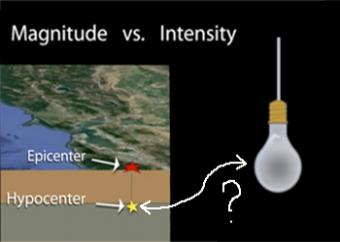
Earthquake intensity (what is felt during an earthquake at any given location) is often mistaken for earthquake magnitude (the instrumentally measured size of that earthquake). This animation describes the main factors that contribute to differing intensities using examples of earthquakes. Produced in collaboration with the U.S. Geological Survey.
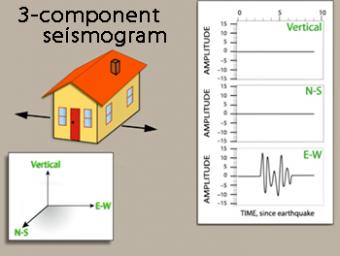
We use exaggerated motion of a building (seismic station) to show how the ground moves during an earthquake, and why it is important to measure seismic waves using 3 components: vertical, N-S, and E-W. Before showing an actual distant earthquake, we break down the three axes of movement to clarify the 3 seismograms.
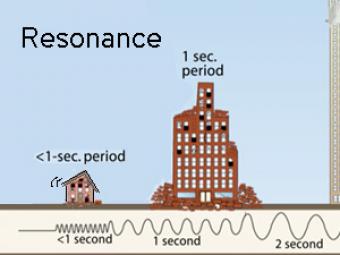
All buildings have a natural period, or resonance, which is the number of seconds it takes for the building to naturally vibrate back and forth. The ground also has a specific resonant frequency. Hard bedrock has higher frequencies softer sediments. If the period of ground motion matches the natural resonance of a building, it will undergo the largest oscillations possible and suffer the greatest damage.
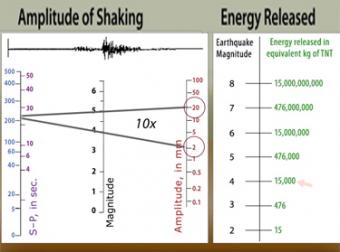
The "moment magnitude" scale has replaced the Richter scale for large earthquakes. Scientists have developed far-more sensitive seismometers that, with faster computers, have enabled them to record & interpret a broader spectrum of seismic signals than was possible in the 1930's, when the Richter magnitude was developed. Find out what scientists learn from seismograms.
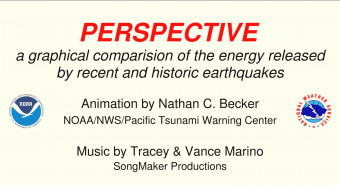
This animation, created by NOAA's Pacific Tsunami Warning Center, graphically compares the relative "sizes" of some 20th and 21st century earthquakes by their moment magnitudes. Each circle's area represents its relative energy release, and its label lists its moment magnitude, its location, and the year it happened.
We encourage the reuse and dissemination of the material on this site as long as attribution is retained. To this end the material on this site, unless otherwise noted, is offered under Creative Commons Attribution (CC BY 4.0) license